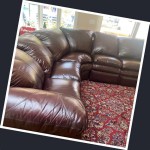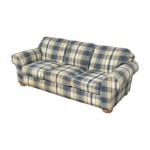Cleaning Crushed Velvet Sofa: A Comprehensive Guide
Crushed velvet sofas offer a luxurious aesthetic and a soft, inviting texture to any living space. However, this delicate material requires specific cleaning techniques to maintain its appearance and prevent damage. Understanding the nature of crushed velvet and employing appropriate cleaning methods are essential for preserving the sofa’s beauty and longevity. This article provides a comprehensive guide to cleaning crushed velvet sofas, outlining necessary preparations, cleaning procedures, and preventative measures.
Crushed velvet is characterized by its short, dense pile that lies in different directions, creating a textured, shimmering surface. This pile is typically made from synthetic fibers, such as polyester or rayon, though some higher-end versions may incorporate silk or cotton. The “crushed” effect is achieved by twisting or pressing the fabric during manufacturing. This distinctive texture makes crushed velvet visually appealing but also presents unique cleaning challenges. Standard cleaning methods used on other upholstery fabrics may not be suitable for crushed velvet and could potentially damage the delicate pile and alter its appearance.
Before undertaking any cleaning procedure, it is crucial to identify the specific fiber content of the crushed velvet sofa. The manufacturer's tag, usually located underneath the cushions or on the back of the sofa, will provide this information. This tag also includes cleaning codes, which offer guidance on the types of solvents and cleaning methods that are safe to use. Common cleaning codes include:
- W: Indicates that water-based cleaning solutions can be used.
- S: Signifies that only solvent-based cleaning solutions (dry cleaning solvents) are appropriate.
- WS: Means both water-based and solvent-based solutions are safe.
- X: Indicates that professional cleaning is recommended, and only vacuuming or light brushing is safe for maintenance.
Ignoring these cleaning codes can lead to irreversible damage to the sofa’s fabric. Always adhere to the manufacturer’s recommendations to ensure the preservation of the material’s texture and color.
Initial Preparation and Assessment
Prior to commencing any cleaning, a thorough assessment of the sofa’s condition is paramount. This involves identifying specific stains, areas of discoloration, and overall level of soiling. This assessment will determine the necessary cleaning agents and techniques required. Furthermore, preparing the surrounding area is critical to prevent accidental damage or contamination.
Begin by removing all loose items from the sofa, including cushions, throws, and decorative pillows. If the cushions are removable, inspect their covers for separate care instructions. Empty any pockets and remove any debris that may have accumulated between the cushions and the frame. Next, protect the surrounding floor by covering it with drop cloths or plastic sheeting. This will prevent any cleaning solutions from seeping onto the flooring and causing damage.
Once the area is prepared, proceed with a dry cleaning method to remove loose dirt and dust. Vacuum the entire sofa using an upholstery attachment. Pay particular attention to crevices, seams, and areas where dirt tends to accumulate. For areas with embedded dirt, use a soft-bristled brush to gently loosen the particles before vacuuming. This initial dry cleaning step is crucial as it removes the majority of surface dirt and prevents it from being ground into the fabric during subsequent wet cleaning.
Before applying any cleaning solution to the entire sofa, it is imperative to perform a spot test on an inconspicuous area. This could be on the back of the sofa or underneath a cushion. Apply a small amount of the chosen cleaning solution to the test area and allow it to sit for a few minutes. Blot the area with a clean, white cloth to check for any color transfer or adverse reactions. If no negative effects are observed after 24 hours, the cleaning solution is likely safe to use on the entire sofa.
Cleaning Methods Based on Cleaning Codes
The appropriate cleaning method depends entirely on the cleaning code specified by the manufacturer. Adhering to these codes is essential for preventing damage to the crushed velvet fabric. The following sections outline the cleaning procedures for each code category.
Code W (Water-Based Cleaning): For sofas labeled with a "W" cleaning code, water-based cleaning solutions are safe to use. However, it is crucial to avoid oversaturating the fabric, as excessive moisture can damage the pile and cause water stains. A mild upholstery cleaner specifically designed for delicate fabrics is recommended. Mix the cleaning solution according to the manufacturer’s instructions.
Apply the cleaning solution to a clean, soft cloth, rather than directly onto the sofa. Gently blot the affected areas, working from the outside towards the center to prevent spreading the stain. Avoid rubbing the fabric vigorously, as this can distort the pile. Use a separate clean, damp cloth to rinse the cleaned area, removing any remaining cleaning solution. Blot the area dry with a clean, dry cloth. Allow the sofa to air dry completely, avoiding direct sunlight or heat, which can cause fading or shrinkage.
For deeper cleaning, a steam cleaner with an upholstery attachment can be used. However, caution must be exercised to avoid oversaturation. Hold the steam cleaner a few inches away from the fabric and use short, controlled bursts of steam. After steam cleaning, use a clean, dry cloth to blot the fabric and allow it to air dry thoroughly.
Code S (Solvent-Based Cleaning): Sofas with an "S" cleaning code require solvent-based cleaning solutions, commonly known as dry cleaning solvents. These solvents are designed to dissolve grease and oil-based stains without the use of water. Due to the potentially hazardous nature of these solvents, it is crucial to ensure adequate ventilation during the cleaning process.
Always wear gloves and a mask to protect your skin and respiratory system from the fumes. Apply the dry cleaning solvent to a clean, soft cloth and gently blot the affected areas. Avoid rubbing or saturating the fabric. Blot the area with a clean, dry cloth to absorb the solvent. Allow the sofa to air dry completely in a well-ventilated area. Ensure that all traces of the solvent have evaporated before using the sofa.
It is generally recommended to consult with a professional dry cleaner for sofas with an "S" cleaning code, particularly for large areas or stubborn stains. Professional cleaners have specialized equipment and expertise to safely and effectively clean crushed velvet fabric using solvent-based methods.
Code WS (Water-Based or Solvent-Based Cleaning): Sofas with a "WS" cleaning code offer the flexibility of using either water-based or solvent-based cleaning solutions. However, it is still essential to perform a spot test before applying any cleaning solution to the entire sofa. Follow the procedures outlined for both Code W and Code S, ensuring that you choose the appropriate cleaning solution based on the type of stain and the fabric's reaction to the spot test.
Code X (Professional Cleaning Only): Sofas with an "X" cleaning code should only be cleaned by professional upholstery cleaners. Attempting to clean these sofas with water-based or solvent-based solutions can potentially damage the fabric. Regular maintenance should be limited to vacuuming with an upholstery attachment or gently brushing the fabric to remove loose dirt and dust.
Addressing Specific Stains
Different types of stains require specific cleaning approaches. Addressing stains promptly increases the likelihood of successful removal. Here are some common stains and recommended cleaning methods:
- Water-Based Stains (e.g., coffee, juice, tea): Blot the stain immediately with a clean, dry cloth to absorb as much liquid as possible. Mix a mild solution of dish soap and water. Apply the solution to a clean cloth and gently blot the stained area. Rinse with a clean, damp cloth and blot dry.
- Oil-Based Stains (e.g., grease, oil, butter): Sprinkle baking soda or cornstarch onto the stain to absorb the oil. Allow it to sit for several hours or overnight. Vacuum up the baking soda or cornstarch. If the stain persists, use a solvent-based cleaning solution (if the cleaning code permits) or consult a professional cleaner.
- Ink Stains: Blot the stain with a clean cloth dampened with rubbing alcohol. Avoid rubbing, as this can spread the ink. Blot with a clean, dry cloth. Repeat until the ink is removed.
- Pet Stains: Clean the stain immediately with an enzymatic cleaner designed for pet stains. Follow the manufacturer’s instructions. These cleaners contain enzymes that break down the organic compounds in pet urine and feces, preventing lingering odors and stains.
In all cases, it is crucial to avoid using harsh chemicals or abrasive cleaners, as these can damage the crushed velvet fabric and alter its color and texture. Always start with the mildest cleaning solution and gradually increase the strength if necessary.
Post-Cleaning Care and Maintenance
After cleaning, it is essential to take steps to restore the crushed velvet’s pile and maintain its appearance. Once the sofa is completely dry, use a soft-bristled brush to gently brush the pile in the direction of the nap. This will help to restore the fabric’s texture and prevent it from looking matted or flattened.
To protect the sofa from future stains and spills, consider applying a fabric protector specifically designed for delicate upholstery. These protectors create a barrier that repels liquids and prevents them from penetrating the fabric fibers. Follow the manufacturer’s instructions for application and reapplication.
Regular maintenance is crucial for preserving the crushed velvet sofa's appearance and extending its lifespan. Vacuum the sofa regularly to remove loose dirt and dust. Rotate and fluff the cushions periodically to prevent uneven wear. Avoid placing the sofa in direct sunlight, as this can cause fading. Consider using throws or blankets to protect the sofa from everyday wear and tear.
Proper cleaning and maintenance are essential for preserving the beauty and longevity of a crushed velvet sofa. By understanding the fabric’s characteristics, adhering to the manufacturer’s cleaning codes, and employing appropriate cleaning techniques, one can ensure that this luxurious piece of furniture remains a stunning focal point in the living space for years to come.

Crushed Velvet Sofa Cleaning Tips Furniture Blog

Cleaning Mrs Hinch Fans Share How To Clean A Velvet Sofa Express Co

5 Easy Ways To Clean A Crushed Velvet Sofa Chill Sofas

5 Easy Ways To Clean A Crushed Velvet Sofa Chill Sofas

5 Easy Ways To Clean A Crushed Velvet Sofa Chill Sofas

How To Clean Velvet Sofa Is Easy Soft Touch Beds

I M A Mum My Easy Will Have Your Sofa Clean In Seconds And It Only Costs 16p The Sun

5 Easy Ways To Clean A Crushed Velvet Sofa Chill Sofas

Cleaning Tip How To Clean A Velvet Sofa According Lynsey Queen Of Express Co

5 Easy Ways To Clean A Crushed Velvet Sofa Chill Sofas








